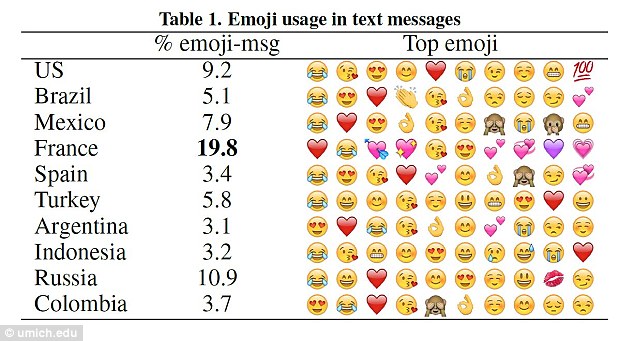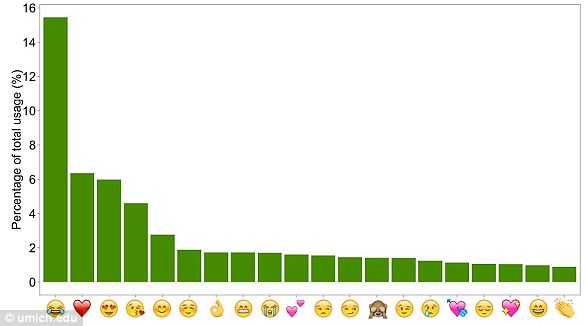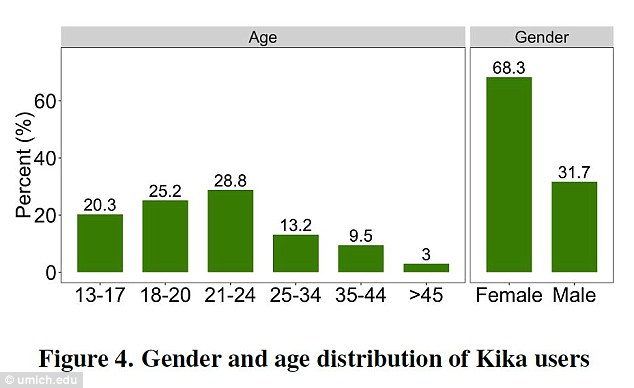
Though they have been around since the late 1990’s, emoji use has escalated sharply with the proliferation of smartphones. A survey conducted by digital start-up Swyft Media revealed that over six billion emoticons or stickers are sent around the world every day. The digital icons have become so ubiquitous that in 2015, the Oxford Dictionary selected the “Face with Tears of Joy” as its “word” of the year. Given their widespread use and popularity, it is not surprising that the tiny images are starting to intrigue researchers as well.
Recently, a team from the University of Michigan and Peking University analyzed 427 million messages sent by users in 212 countries to investigate the differences in emoji use by location and culture. The findings, published in the Journal Ubicomp, revealed that the French are emoji power users and included them in 19.7% of their texts. Though this may not seem like much, it is almost twice that of the second-place winner, Russia, where only 10.9% of the messages contained emojis. Americans came in a close third at 9.2%.

Also, though the 😂 handily wins the title as the most popular emoji, the romantic French appear to prefer the ❤️. They are also more likely to use variations of the heart emoji, while the rest of the world prefers emojis depicting faces.
Not surprisingly, the study found that women tend to use emojis more extensively in their texts than men. However, they stick to a handful of favorites. Men, on the other hand, are more discerning and appear to go the extra length to find an emoji that matches the situation. But even so, like 90% of the world, they select from the top 119 of the 1,281 emojis available.

Though these findings were interesting, most intriguing was the conclusion that the emoji selection is influenced by societal environment. The researchers say that people living in countries like Australia and France with high levels of individualism – the belief that one person’s need is greater than that of a society or group – used happier emojis. Conversely, those from countries with closer-knit societies, like Colombia, were prone to using sad or angry emojis.
Also, cultures like Turkey and Russia, known for their self-discipline and restraint, appeared to be more content, at least according to the emojis. On the other hand, residents in high-indulgent cultures, like Mexico, seemed unhappy or dissatisfied.

The researchers believe that the findings of this “first large-scale analysis of emoji usage” will help develop input methods to create custom “next to use” suggestions and perhaps even expand our emoji vocabulary! Who knew that the tiny image we add to brighten up our texts could reveal so much about our culture?
Resources: umich.edu